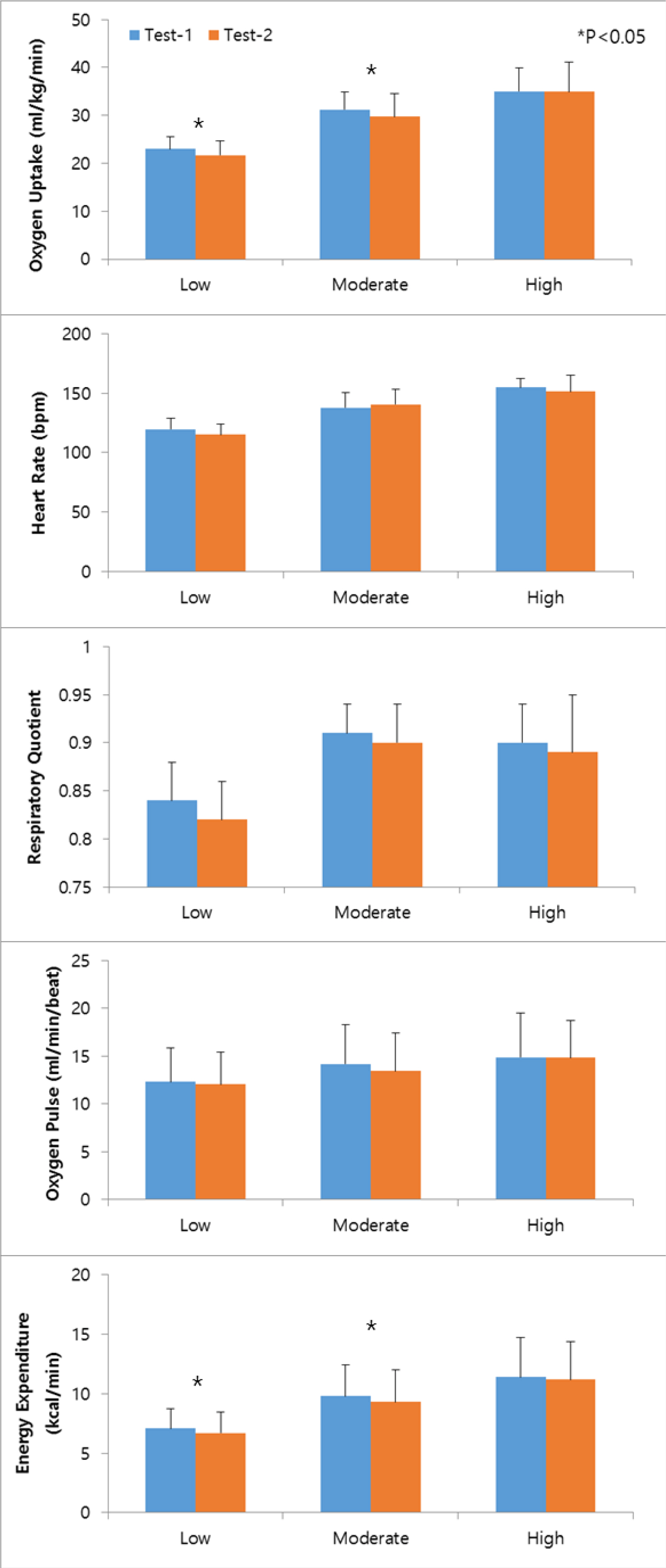References
1. Buchner HH, Savelberg HH, Schamhardt HC, Merkens HW, Barneveld A. Kinematics of treadmill versus overground locomotion in horses. Vet Q 1994;16(Suppl 2):S87–90.
2. Frishberg BA. An analysis of overground and treadmill sprinting. Med Sci Sports Exerc 1983;15(6):478–85.
3. Pierrynowski MR, Winter DA, Norman RW. Transfers of mechanical energy within the total body and mechanical efficiency during treadmill walking. Ergonomics 1980;23(2):147–56.
4. Savelberg HH, Vorstenbosch MA, Kamman EH, van de Weijer JG, Schambardt HC. Intra-stride belt-speed variation affects treadmill locomotion. Gait Posture 1998;7(1):26–34.
5. Alton F, Baldey L, Capian S, Morrissey MC. A kinematic comparison of overground and treadmill walking. Clin Biomech (Bristol Avon) 1998;13(6):434–40.
6. Stolze H, Kuhtz-Buschbech JP, Mondwurf C, Boczek-Funcke A, Jöhnk K, Deuschl G, et al. Gait analysis during treadmill and overground locomotion in children and adults. Electroencephalogr Clin Neurophysiol 1997;105(6):490–7.
7. Warabi T, Kato M, Kiriyama K, Yoshida T, Kobayashi N. Treadmill walking and overground walking of human subjects compared by recording sold-floor reaction force. Neurosci Res 2005;53(3):343–8.
8. Elliott BC, Blanksby BA. A cinematographic analysis of overground and treadmill running by males and females. Med Sci Sports 1976;8(2):84–7.
9. Riley PO, Dicharry J, Franz J, Della Croce U, Wilder RP, Kerrigan DC. A kinematics and kinetic comparison of overground and treadmill running. Med Sci Sports Exerc 2008;40(6):1093–100.
10. Greig C, Btler F, Skelton D, Mahmud S, Young A. Treadmill walking in old age may not reproduce the real life situation. J Am Geriatr Soc 1993;41(1):15–8.
11. Murray MP, Spurr GB, Sepic SB, Gardner GM, Mollinger LA. Treadmill vs. floor walking: kinematics, electromyogram, and heart rate. J Appl Physiol (1985) 1985;59(1):87–91.
12. Parvataneni K, Ploeg L, Olney SJ, Brouwer B. Kinematic, kinetic and metabolic parameters of treadmill versus overground walking in healthy older adults. Clin Biomech (Bristol, Avon) 2009;24(1):95–100.
13. Riley PO, Paolini G, Croce UD, Paylo KW, Kerrigan DC. A kinematic and kinetic comparison of overground and treadmill walking in healthy subjects. Gait Posture 2007;26(1):17–24.
14. Stoquart G, Detrembleur C, Lejeune T. Effect of speed on kinematic, kinetic, electromyographic and energetic reference values during treadmill walking. Neurophysiol Clin 2008;38(2):105–16.
15. Lee SJ, Hidler J. Biomechanics of overground versus treadmill walking in healthy individuals. J Appl Physiol (1985) 2008;104(3):747–55.
16. Arsenault AB, Winter DA, Marteniuk RG. Treadmill versus walkway locomotion in humans: an EMG study. Ergonomics 1986;29(5):665–76.
17. Minnetti AE, Ardigo LP, Capodaglio EM, Saibene F. Energetics and mechanics of human walking at oscillating speeds. Am Zool 2001;41(2):205–10.
18. van Ingen Schenau GJ. Some fundamental aspects of the biomechanics of overground versus treadmill locomotion. Med Sci Sports Exerc 1980;12(4):257–61.
19. Pearce ME, Cunningham DA, Donner AP, Rechnitzer PA, Fullerton GM, Howard JH. Energy cost of treadmill and floor walking at self-selected paces. Eur J Appl Physiol Occup Physiol 1983;52(1):115–9.
20. Minnetti AE, Boldrini L, Brusamolin L, Zamparo P, McKee T. A feedback-controlled treadmill (treadmill-on-demand) and the spontaneous speed of walking and running in humans. J Appl Physiol (1985) 2003;95(2):838–43.
21. Segers V, Lenoir M, Aerts P, De Clercq D. Influence of M. tibialis anterior fatigue on the walk-to-run and run-to-walk transition in non-steady state locomotion. Gait Posture 2007;25(4):639–47.
22. Kram R, Taylor CR. Energetics of running: a new perspective. Nature 1990;346(6281):265–7.
23. Taylor CR. Force development during sustained locomotion: a determinant of gait, speed and metabolic power. J Exp Biol 1985;115:253–62.
24. Biewener AA, Farley CT, Roberts TJ, Temaner M. Muscle mechanical advantage of human walking and running: implications for energy cost. J Appl Physiol (1985) 2004;97(6):2266–74.
25. Saibene F, Minetti AE. Biomechanical and physiological aspects of legged locomotion in humans. Eur J Appl Physiol 2003;88(4-5):297–316.
26. Nilsson J, Thorstensson A, Halbertsma J. Changes in leg movements and muscle activity with speed of locomotion and mode of progression in humans. Acta Physiol Scand 1985;123(4):457–75.
27. Andersson EA, Nilsson J, Thorstensson A. Intramuscular EMG from the hip flexor muscles during human locomotion. Acta Physiol Scand 1997;161(3):361–70.
28. Waters RL, Lunsford BR, Perry J, Byrd R. Energy-speed relationship of walking: standard tables. J Orthop Res 1988;6(2):215–22.
29. Waters RL, Mulroy S. The energy expenditure of normal and pathologic gait. Gait Posture 1999;9(3):207–31.


